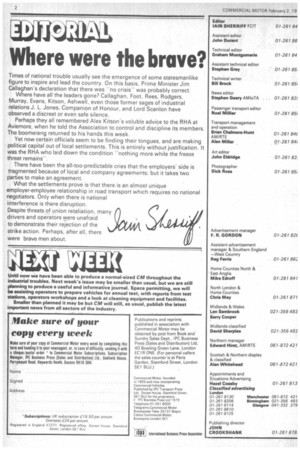Where were the breve?
Page 4

If you've noticed an error in this article please click here to report it so we can fix it.
Times of national trouble usually see the emergence of some statesmanlike figure to inspire and lead the country. On this basis, Prime Minister Jim Callaghan's declaration that there was ''no crisiswas probably correct.
Where have all the leaders gone? Callaghan, Foot, Rees, Rodgers, Murray, Evans, Kitson, Ashwell, even those former sages of industrial relations J. L. Jones, Companion of Honour, and Lord Scanlon have observed a discreet or even safe silence.
Perhaps they all remembered Alex Kitson's voluble advice to the RHA at Aviemore, when he told the Association to control and discipline its members. The boomerang returned to his hands this week.
Yet now certain officials seem to be finding their tongues, and are making political capital out of local settlements. This is entirely without justification. It was the RHA who laid down the condition "'nothing more while the freeze threat remains''.
There have been the all-too-predictable cries that the employers' side is fragmented because of local and company agreements; but it takes two parties to make an agreement.
What the settlements prove is that there is an almost unique employer-employee relationship in road transport which requires no national negotiators. Only when there is national interference is there disruption. Despite threats of union retaliation, many drivers and operators were unafraid to demonstrate their rejection of the strike action. Perhaps, after all, there were brave men about.




















































































































